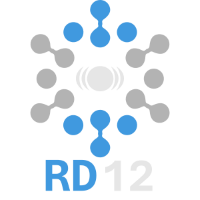Speaker
Description
Microcrystal electron diffraction (MicroED) involves collecting a sequence of diffraction images from a continuously rotating microcrystal in a transmission electron microscope. Due to the small size of these crystals, the resulting diffraction patterns typically feature weak, low-intensity spots. Recent advances in direct electron-counting detectors have significantly improved signal detection, enabling high-quality data collection at lower electron fluence. This not only shortens acquisition times but also mitigates radiation damage to the sample. Additionally, the introduction of energy filtering has enhanced the accuracy of high-resolution reflection integration without increasing the dose delivered to the sample. In this presentation, we will review early results from radiation damage studies on cryo-cooled crystals of model proteins and highlight recent methodological improvements in MicroED.

